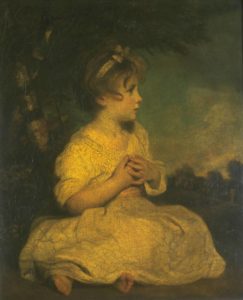Is this all there is?
Their four children had surely asked them this, once or twice, as they returned from a long day in the fields to yet another dinner of cornbread and peas. Maybe they no longer asked because New Deal relief meant more provisions, or maybe they no longer asked because the answer did not change.
The family selection specialist described Mrs. Barclay as “a thin person of the ‘pine knot’ variety.” Was it her own biology that rendered her a woman reducible to a wounded lump of tree? Was it a life of hard work and sorrow? Was it that she pushed more cornbread and peas onto her children’s plates and less onto her own?
Is this all there is?
She surely asked this of what was left after the tornado tumbled the house, plucked the crops, spun eighty chickens into the sky, and in its desperate aftermath swept her family away from those with whom they had gathered in community.
Is this all there is?
Surely she asked this when the child(ren) died.
Perhaps “pine knot” was just the word for her after all. A tree binds its wounds into a knot when a branch is torn away. Perhaps her body gathered into itself in sorrow when the child(ren) died, hardened in its wounds even as her heart wrapped itself around those four living children, those children the family selection specialist thought “cute, well fed, and well dressed.”
Is this all there is?
The question surely lingered at the end of each harvest.
Another rented farm, another board-and-batten shack. This time they knew no one. In summer, their tall corn hid from view The Largest Peach Orchard in the World, now a thousand acres of abandoned, crabbed trees that abutted the farm, the rotting fruit permeating the air. Maybe they could sneak a peach or two, maybe even a bushel or so to can for winter. Hungry winter, and surrounded by farmland as far as the eye could see. “God knows I must not know how to farm,” her husband said. “I have been at it all my life and I still have no more money than I had at first.”
Is this all there is?
SORROW. Lettered in green on the white wooden cross, two feet tall, on the left side of the mantel.
ADVERSITY. On an identical cross, to the right.
Framed, in the middle, Joshua Reynold’s Age of Innocence, that classic image of unspoiled childhood, sold everywhere, available nowhere.
The dead child(ren) whose faces faded from memory remembered through a small girl dressed for a life of ease, softly lit, her unblemished skin blending into the cream of her dress.

Mrs. Barclay. A name but not her given one. A sliver of story in an archive, the husband and the family selection specialist who interviewed them for resettlement the main attraction. An unobservant, unreliable narrator. A hint at loss on the mantel. A moment in amber, its beginning untold, its ending unknown. A life of scarcity amidst abundance, a whisper of love amidst sorrow, a trace of hope amidst despair.1Anna Weir Layne, Family Selection Specialist, Resettlement Administration, “The House of the Wooden Crosses,” 1-5, from Little Stories of Folks in Arkansas, n.p., n.d., Folder: U.S.—Resettlement Administration—Arkansas, in Eleanor Roosevelt Pamphlet Collection, Franklin D. Roosevelt Presidential Library, Hyde Park, New York.
Is this all there is?











